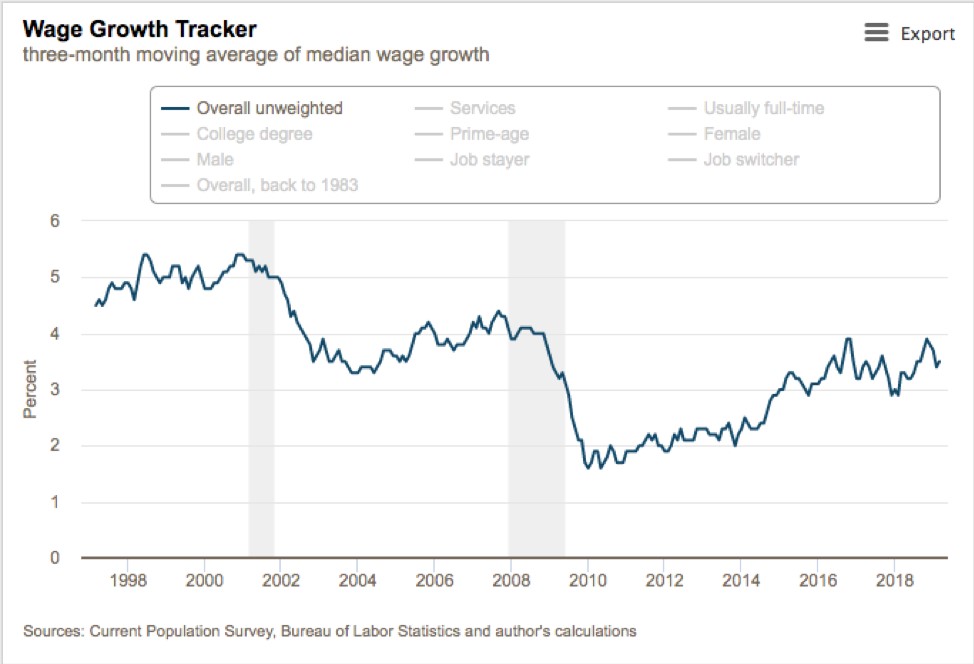GDP bolsters economic outlook as rates creep up again
Mortgage rates continued their slow but steady climb for the fourth straight week. The benchmark 10-year Treasury note yield increased as well as the 30-year Treasury bond. As of Thursday afternoon, Freddie Mac's average 30-year fixed-rate mortgage was sitting at 4.2%. That is still well below last year's high in November of just under 5%.
That increase has directly affected mortgage applications, according to the Mortgage Bankers Association. On an unadjusted basis, the Market Composite Index dropped 7.3% from last week. MBA Senior Vice President and Chief Economist Mike Fratantoni says that's directly related to rate sensitivity for consumers with the 30-year fixed-rate average jumping 10 basis points in just three weeks.
Despite the increase in mortgage rates and low inventory, the spring buying season has been strong. This is mainly due to higher wages and mortgage rates that are still below what we saw last fall when rates were nearly 5%.
The chart below from the Federal Reserve Bank of Atlanta shows the wage growth over the last 20 years. March of 2019 shows 3.5% growth up from 3.4% in February 2019. You can see the steady climb continuing since 2010.

Recently, Fannie Mae's 2019 forecast projected an increase in mortgage volume from $1.6 trillion in 2018 to $1.62 trillion in 2019. This is a departure from the company's March forecast which projected a decline to $1.59 trillion in 2019 volume.
They cite similar factors like wage growth, low rates and also a decline in the home price index. While prices are still going up, the rate at which they are increasing has slowed considerably. The Federal Housing Finance Authority's data shows that the home price index rose by 0.3% in February, which was below expectations. Year-over-year, the rate declined by 0.7pp to 4.9% growth.
New home sales saw an increase in March, reaching their highest level since November of 2017. That went against expectations that there would be a decrease in that statistic. Notably, the average price of a new home was down 9.7% from a year ago and now sits just above $300,000. There is a 6 month supply of new homes now compared to 6.1 months in February.
Existing home sales, however, are in a much tighter market. Supply is sitting at 3.9 months which is considered very tight. In February we saw an 11-month high for existing home sales. March's numbers dropped considerably, 4.9% lower than February's numbers. Year-over-year, existing home sales have dropped by 5.4%.
MARKET UPS AND DOWNS
Wall Street continues to react to corporate earnings reports this week which have generally beaten analysts' expectations as both the S&P and Nasdaq saw record highs. The Dow on the other hand hasn't fared quite as well as Boeing has kept the index at bay for a few weeks. Thursday morning's announcement from 3M that it would cut jobs due to lower-than-expected quarterly profits has pushed the Dow even lower.
The market is also being affected by large U.S. banks looking to keep profit up despite the cost of business increasing. In the first quarter of this year, the four largest banks bought back $19 million in stock to offset the uncertainty of slower economic growth and the flattened yield curve on the 10 and 2-year Treasury notes. Analysts expect that while banks may not miss earnings, their growth will be limited.
GDP TOPS EXPECTATIONS

The U.S. economy grew by 3.2% in the first quarter according to the Bureau of Economic Analysis. That is far above and beyond the 2.5% growth that was predicted by many analysts. That makes this the best growth to start a year since 2015, when the first-quarter GDP also topped 3%.
The trade deficit tipped more in the United States' favor with exports going up by 3.7% and imports decreasing by the same amount. To the point we made earlier about wages increasing, data shows that disposable income went up by 3% in the first quarter with prices only increasing by 1.3% (excluding volatile items like food and energy).
What makes this more interesting is that the first-quarter was when the 35-day government shutdown happened.
Alec Young, managing director of global market research at FTSE Russell, says this report will do a lot to stem fears of a recession. "At a time of lingering U.S.-Chinese trade uncertainty and weak economic data everywhere from Germany to Korea to Japan, strong U.S. data acts as an insurance policy against further global economic weakness. And with inflation still subdued, it's too early to start worrying about Fed rate hikes again."
JOBLESS CLAIMS RISE, BUT LABOR MARKET STILL STRONG
The number of people applying for unemployment benefits skyrocketed to a 2-and-a-half month high of 230,000 according to the Labor Department. That's a week-over-week increase of 37,000. The shock of that kind of increase is tempered by the Easter holiday as well as spring break. When you look at the 4-week average, the increase was 4,500.
When you look at continuing claims, meaning people who are already receiving benefits, there was an increase of 1,000 putting the number at 1.66 million. However, that statistic is at a near half-century low.
The Commerce Department reports that the demand for non-defense capital goods, excluding aircraft, saw a considerable increase of 1.3%, the largest increase in eight months. The demand was shown to be in computers and other electronic goods. That was the largest increase in core-capital goods since last July.
A drop in the shipments of core-capital goods suggests business spending dropped in the first quarter. However, looking at the increase in orders it's likely that business spending will see an increase in the second quarter.
Treasury prices dropped as yields increased on the news of this data, while the dollar held its gains.


